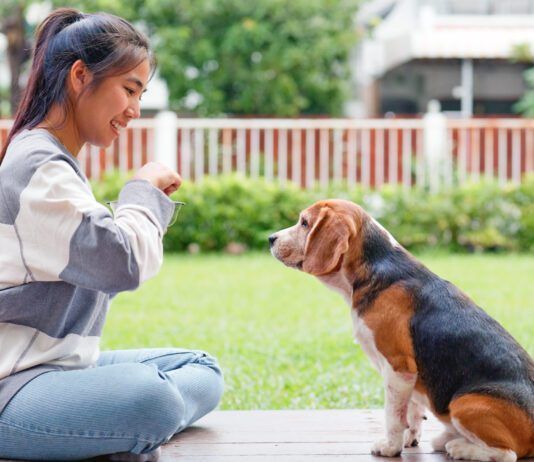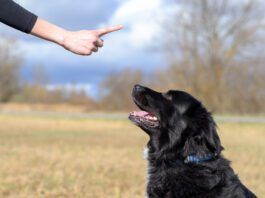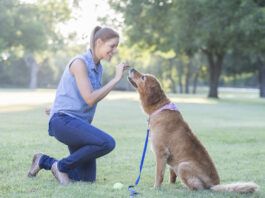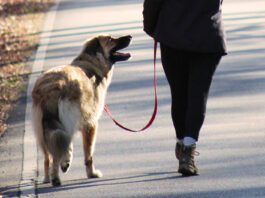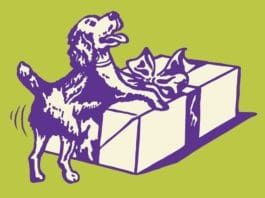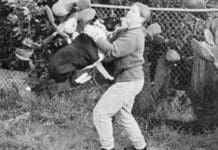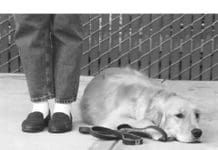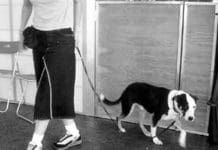Causes of Reactive Dog Behavior and How to Train A Reactive Dog
“Reactive” is a term gaining popularity in dog training circles – but what is it, exactly? In her book Clinical Behavioral Medicine for Small Animals, Applied Animal Behaviorist Karen Overall, M.A., V.M.D., Ph.D., uses the term to describe animals who respond to normal stimuli with an abnormal (higher-than-normal) level of intensity. Take a deep breath and relax. We have positive training solutions for dogs who "go off" or "lose it" in certain circumstances.
New to Positive Dog Training?
Switching to positive training? At first, it might be frustrating for you – and your dog. The benefits, however, will last a lifetime. In positive training, the goal is to help the dog do the right thing and then reward him for it, rather than punishing him for doing the wrong thing. If he makes a mistake, the behavior is ignored, or excused with an “Oops, try again!” to encourage the dog to do something else.
Understanding Reward Based Dog Training
In the 1950s, behavioral scientist B.F. Skinner developed a number of principles that are applicable to all living things with a central nervous system. He found that animals are likely to repeat behaviors that are enjoyable/rewarding to them, and not likely to repeat behaviors that result in something unpleasant (punishment). Neutral stimuli – things that don’t matter to the animal – don’t have an impact on behavior one way or the other. Skinner demonstrated that humans can use these simple principles to modify an animal’s behavior. Rewards are the most reliable way to deliberately increase an animal’s offered behaviors; conversely, punishment decreases those behaviors. (See “The Four Principles of Operant Conditioning,” next at end of story). We use these behavioral principles in dog training with great success.
Force-Based Training Methods and Some Unintended Consequences
Most people, unwittingly or intentionally, use a lot of physical force when raising and training their dogs. The purposeful ones have a whole variety of reasons. Some may have read about behavioral theories regarding dominance and “the importance of showing the dog who’s boss.” Fans of these theories may advocate imitations of canine behavior such as “scruff shakes” or “Alpha rolls” to convince the dog he’s at the bottom of the family hierarchy. Others may have been influenced by advocates of traditional, military-style training – think of yanking collar ‘corrections’ or using the leash leveraged under their foot to forcibly pull a dog into a Down.
Classical Conditioning for Dogs
Classical conditioning, quite simply, is learning by association. It is when a person or animal associates one stimulus with something that was not previously associated.
Teaching Fetch Using Positive Reinforcement Techniques
Who has not watched in awe as a Border Collie at a local park sails through the air, snatches a FrisbeeTM in mid-flight and dashes back to her owner, dropping the Frisbee and waiting in eager anticipation for the next throw? Playing fetch with your dog is fun. It’s also a great way to strengthen the dog/human bond, satisfy your dog’s prey/chase instincts, and provide enough exercise to work off that excess energy that can make him a challenge to live with. A formal retrieve is also required for upper levels of obedience competition.
Tethering Your Dog for Training
For many years, I have been a vigorous and vocal opponent of keeping dogs tied or chained as a primary means of confinement. The hazards of tying a dog are well-documented, and include increased aggression, vulerability to human and non-human intruders, and the risk of hanging or choking. It may come as a surprise, therefore, to know that I regard the tether as an invaluable piece of training equipment. The difference and it's a big one is in the application.
Shocked About E-Collars
I suggest they wear one and let you "tune" the intensity until it reaches their "recognition" level. I have two dogs who


